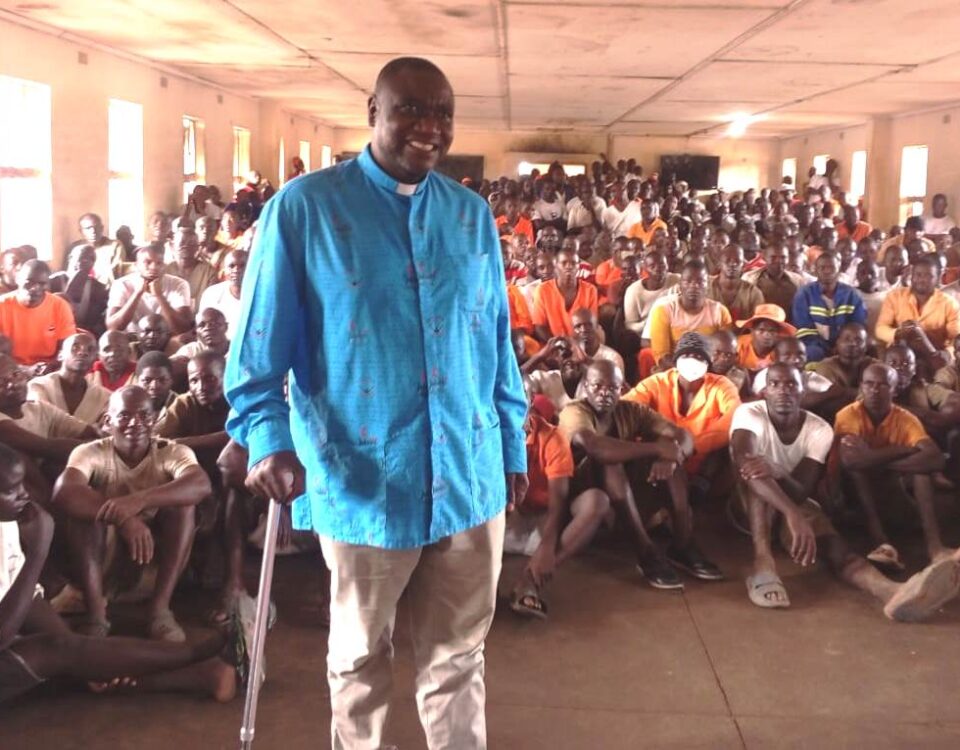
Holiday Inn Mutare refurbishes ward at St Joseph’s Mission Hospital to wrap up its September ‘Giving for Good’ month
October 3, 2025
Courtroom erupts in cheers after Chiutsi’s not guilty verdict in the Clique Pharmacy theft and fraud saga
October 9, 2025Rethinking biogas energy in Chimanimani’s arid rural areas as a potential game changer in climate change adaptation and combating deforestation
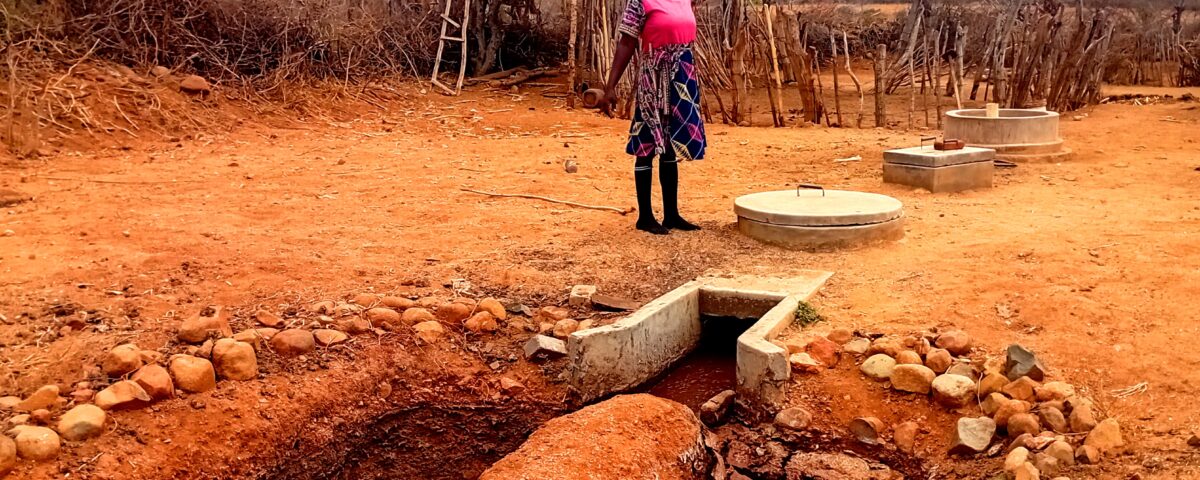
Mwaidei Musukutwa from Chakohwa village in ward 2 in Chimanimani district believes biogas is the future for people in arid regions in rural areas. She is enjoying the benefits as a beneficiary in 2023 from a pilot project initiated by Practical Action in Chimanimani district.
Ngoni Dapira
AS the world focuses on green energy and turning waste into energy as a climate change adaptation measure, for developing countries like Zimbabwe, biogas is the future, especially in rural areas where electrification from the national grid is still lagging, despite electricity now being a fundamental need in the present-day digital era, for both urban and rural people.
For 39 years old Mwaidei Musukutwa from Chakohwa village in ward 2 in Chimanimani district, which is about 70km south of Mutare district, the capital of Manicaland Province, biogas has made life easier for their family. The drought prone area characterised by high temperatures, rainfall deficit, crop failures and chronic food deficiencies is however conducive for livestock rearing, which is the source of biogas energy.
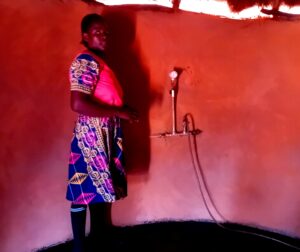
Musukutwa in their traditional round thatched kitchen hut where the biogas stove is set up.
This makes the area ideal for biogas energy as the waste from livestock like cattle, sheep, goats, chickens and pigs can be used to produce biogas energy to power household stoves, reducing reliance on firewood and help combat deforestation which is a major concern in most rural areas countrywide because of limited alternatives to substitute firewood in the lack of electricity.
In 2023 Practical Action started a pilot programme of installing biodigesters at four homesteads in Chimanimani in Chakohwa and Rupise villages. Biogas, a renewable source of cooking energy produced through the breakdown of animal and food waste, holds tremendous potential for Zimbabwe in mitigating deforestation which is fueled by the daily need for firewood for cooking in rural areas.
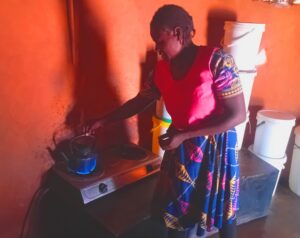
No more firewood stoves as its now methane gas stoves being used. This lessens deforestation.
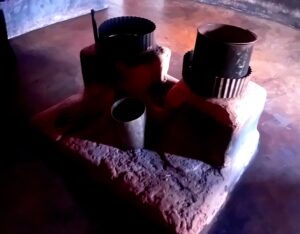
They no longer use the tsotso stove in their kitchen and now use a gas stove.
A biodigester is used to produce low pressure methane gas energy by decomposing cow dung and bio-degradable waste material. The raw gas is different from the Liquefied Petroleum (LP) that most consumers are used to, but can be used for domestic use such as cooking.
Practical Action is an international development non-governmental organization that builds sustainable lives and livelihoods with people on the frontlines of poverty and climate change by improving agriculture so that smallholder farmers can adapt to climate change and improve their living standards.
The domestic biogas energy project was implemented by Practical Action through the Flood Resilience Programme, which receives funding from the Zurich Climate Resilience Alliance. This initiative marked a significant step towards empowering women, promoting sustainable energy alternatives, and safeguarding the environment in Zimbabwe’s Chimanimani district.
Musukutwa a single mother of two said in 2023 around March, Practical Action asked for volunteers in their village who were interested in taking part in pilot domestic biogas projects and she became one of the few that quickly agreed to take part.
“As volunteers were just required to dig a 2.1 metres deep hole with a diameter of 4.2 metres and radius of 2.1 metres which would be used for the biogas digester at our homestead, whilst the rest of the work would be done by builders contracted by Practical Action and the REA technicians that would install the gas pipes and set up the gas stove,” she said.
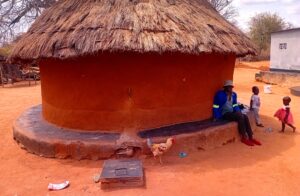
Rufu Musukutwa, Mwaidei’s father(blue jacket) is also enjoying the benefits that come with biogas. The biogas pre-fabricated slab with pipes from the biodigester directs the gas into the stove in the thatched kitchen hut.
Musukutwa says she had to dig the hole by herself because her father is now an elderly man and her brothers now live in South Africa and rarely come visit. At their homestead they are six, including her father Rufu Musukutwa and two nieces, still youngsters, so she is the only adult child at home doing most of the chores and helping to fend for the family. She said her mother passed away last year but she had also briefly enjoyed the benefits of biogas because the project was completed and became operational in May 2023.
“Apart from the benefit of gas that we are using for cooking, we also sell the processed waste of cow dung from the biodigester to farmers from Chakohwa Irrigation Scheme that use it as manure. A scotch cart load of cow dung we exchange for two bucket loads of maize (20 litre buckets), which is about US$12 to $20 depending on the demand and supply prices of maize on the market,” she said.
She said the installed domestic biogas models are nine cubic metre facilities with the capacity to produce low pressure gas for use the whole day, cooking at least all the three basic meals from breakfast, lunch and supper as well as teas in between.
“On a daily basis we load into the biodigester two buckets of cow dung and two buckets of water and to produce gas for cooking and manure as a by-product. But when it was first time set up we used 12 drums of cow dung and water,” said Musukutwa during a visit at their homestead last Tuesday where she demonstrated that their biogas was still functional.
She however bemoaned that the biogas will now be difficult to sustain because they lost a lot of cattle to the January disease that struck last year. From a herd of 14 cattle they now have four cattle left, of which, without cattle it is difficult to meet the daily supply needed of two buckets of cow dung for the biodigester to process methane gas.
January disease is the common name for theileriosis, a deadly tick-borne disease in cattle caused by the Theileria parva parasite, most prevalent in Zimbabwe during the high-rainfall season when ticks are abundant, typically January.
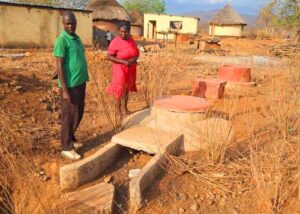
Another beneficiary of the initiative from Chibuwe village in Rupise ward 5, Tichaedza Nechaziva and wife are happy with their domestic biogas system.
Another beneficiary of the initiative from Chibuwe village in Rupise ward 5, Tichaedza Nechaziva said biogas is the future in arid regions and the best way to combat deforestation. He said the scheme will also lessen the burden for women and children, who currently have to travel long distances in search of firewood.
“If this biogas is implemented large scale as intended then it will help combat deforestation in rural areas and also assist the elderly and vulnerable. We are also now able to do other things that we could not do well because of limited time as women spent more time looking for firewood and cooking,” said Nechaziva.
Adding, “We also no longer have to wake up very early to go and fetch firewood to prepare for our children to go to school, as we now use gas. We are grateful to the people who brought this project,” she said.
However, since 2023, after the pilot project, nothing has been done to step up the project by Practical Action, but investigations by Easterntimeszim reveal that if this project is to be implemented, it is expected to bring transformation to the lives of the largely elderly population in Chakohwa village. Clean cooking energy will also replace the laborious task of gathering firewood and provide a safer and more sustainable alternative. In addition to the numerous environmental benefits, the project will also empower local builders, equipping them with the skills required to construct and maintain biogas digesters.
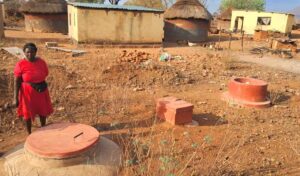
The biogas system at the Nechaziva homestead in Rupise village.
As climate change continues to take a toll on various global settings, smallholder and rural farmers, particularly in the developing world, increasingly become a vulnerable population group. Climate change mitigation comes with high costs and complex challenges such that adaptation to the phenomenon is a viable option but very expensive.
According to the Intergovernmental Panel on Climate Change (IPCC), climate change adaptation refers to the ‘adjustment to actual or expected climate and its effect’. It generally means a shift in livelihood practices meant to cope with newly emerging climatic conditions.
As coal gets more difficult and expensive to mine with the pressure to reduce greenhouse gases, there is need to look for other sources of clean, renewable energy. However, whist challenges like high initial costs and lack of maintenance persist, biogas nonetheless remains a potential transformative technology for sustainable energy and waste management across the country and the continent at large.
“Climate change adaptation is an ongoing process with no specific endpoint,” says an energy expert who is a project coordinator for REA, but requested anonymity. He said the disadvantage of biogas is that it requires homesteads with large herds of cattle for it to work efficiently at domestic level.
“As REA we are currently implementing domestic and institutional biogas projects. We need a homestead with about seven cattle to set up a 6 cubic metre biogas and one with a herd of about 10 cattle to set up a 9 cubic metre biogas project,” said the projector coordinator who feared divulging his name without clearance from the system.
In the implementation of biogas projects REA is providing the cement, gas pipes, technicians and builders, whilst the beneficiaries are expected to supply their own bricks, pit sand and stones to build the infrastructure.
“The standard 9 cubic metres biogas requires about 28 bags of cement whilst the gas pipes used on average cost about US$130, so it is reasonably affordable buying on your own in cases where REA fails to supply material when out of stock. So in such cases we encourage homesteads to buy their own equipment and provide them the technical help of building and setting up the biogas system. At the moment REA is doing biogas energy for cooking only at domestic level. There are options for 13, 20 and 23 cubic metre biogases which can generate electricity but those are costly and we would rather have then as institutional options, “ he said.
He said the demand for biogas is increasing but the problem of small herds at most homesteads remains a stumbling block which needs interventions for inclusivity and leaving no one behind as the initiative grows in rural areas.


